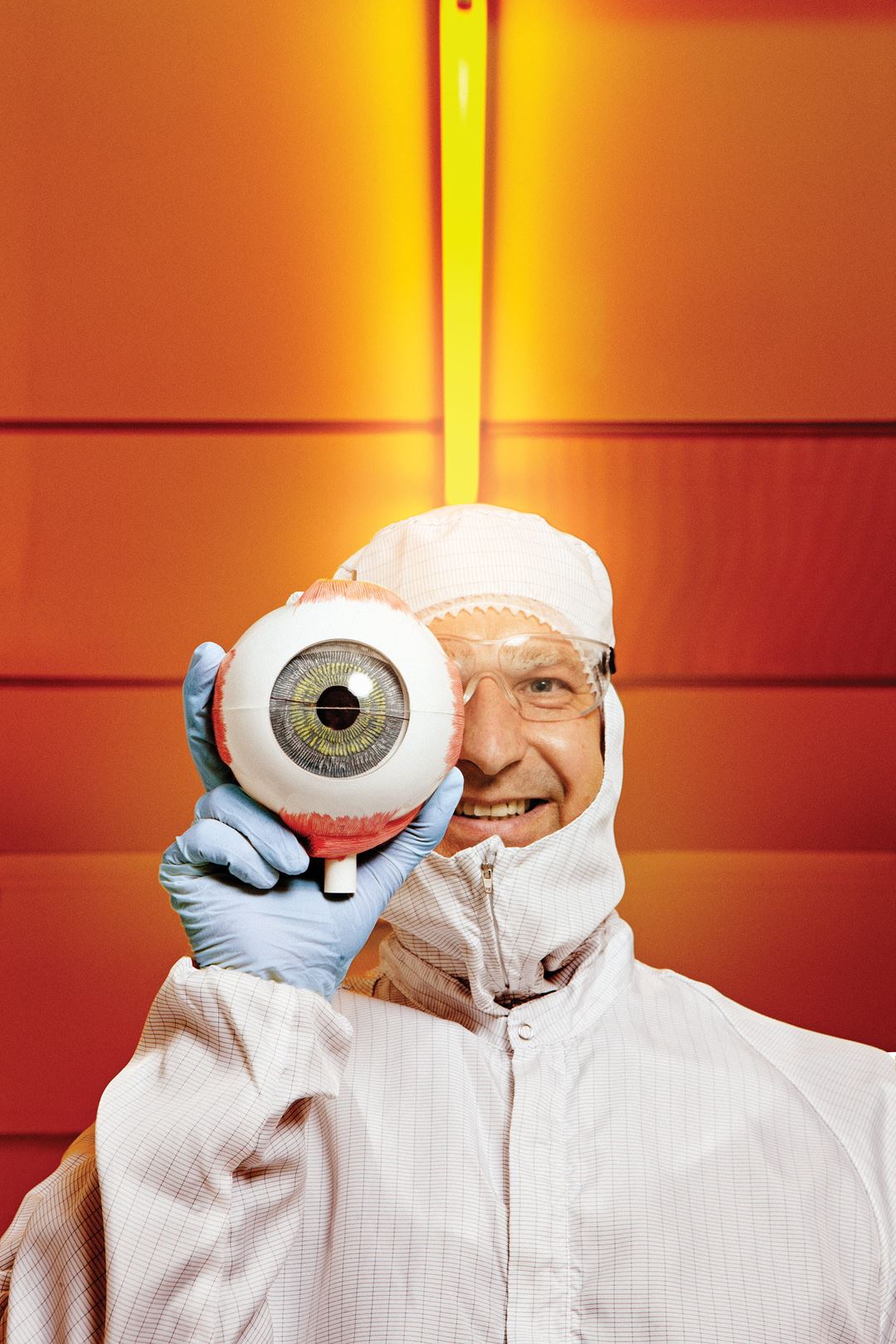Six years ago a group of SINTEF research scientists at MiNaLab in Oslo began throwing around ideas for new energy-saving features which would provide autofocus in small optical systems.
Most mobile telephones today have built-in cameras, but these are not equipped with autofocus like ordinary photographic cameras. The small aperture results in a acceptable depth of focus, but also admits limited amounts of light, making indoor photography difficult and the photos are often not sharp.
An important requirement for the researchers was the ability to focus the lens sharply. This is normally achieved by moving lenses, but this requires energy, and the optimal solution would therefore be to change the curvature of the lens itself, just like the lens of the human eye.
Like the human eye
What the researchers needed was therefore some sort of soft and variable lens and a material which could mimic the muscles of the eye which control the lens.
“The idea of creating an autofocus lens using the principles found in nature got us thinking at the time,” research scientist Dag Vang recalls. “The result was a sketch of an optical “sandwich” consisting of extremely thin glass plates, a polymer, a gel material and a metal alloy with flexible properties – all at very small scale.”
The required material was developed to order. To succeed, the researchers needed to make a ring of material contract and expand almost without expending energy – and at the same time construct a gel-based lens in the middle.
Industrial collaboration
After a year of intense development work the research team had a working prototype, and in 2006 they signed a project contract with the Norwegian company PoLight in Horten. This small company had been working on optical systems for some time and saw the potential for introducing the technology to the mobile phone market.
Earlier this year the company demonstrated the new camera lens, integrated into a mobile phone camera, to interested specialists at the world’s largest mobile device exhibition, Mobile World Congress in Barcelona. “There was great interest because of the picture quality provided by the lens. We are now in discussions with several of the major mobile phone manufacturers and subcontractors, and I hope we will have a contract by the end of this year,” says Jon Ulvenson, Managing Director of PoLight.
Christina Benjaminsen

